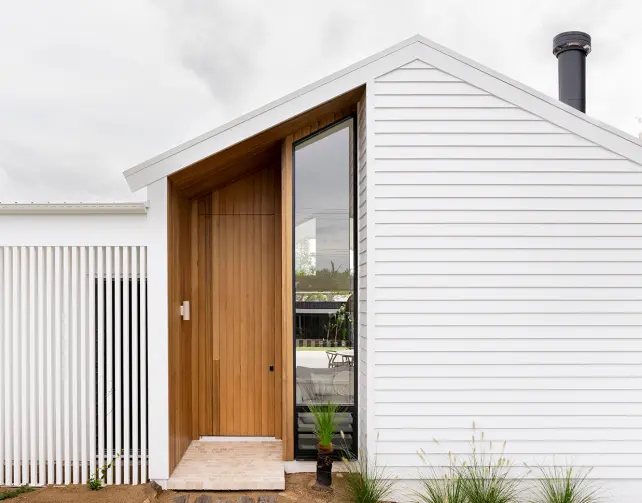Articles
5 Weekend Jobs to Make A Small Space Feel Bigger

When it comes to designing a modern home that suits your lifestyle, good things really can come in small packages. If you’re looking to maximise a tiny space, try these quick and easy ideas – most won’t cost you a thing and can be done in a day.
Tiny houses are trending, with homes built in Australia in 2018 smaller on average than they’ve been in two decades. More and more Australians are living in spaces much cosier than the 186.3-square-metre average, and while affordability is a big factor, a simpler and more sustainable lifestyle also holds plenty of appeal. Whatever your reason for downsizing, there’s no need to compromise on looks or comfort – try these tips for a home that’s small in size but big on style and functionality.
DECLUTTER
The easiest way to make your home feel more spacious won’t cost you a thing – it can also be highly addictive! Decluttering is a great way to take stock of everything you have in your home, not to mention it makes lighter work of cleaning. Start on one space at a time to avoid feeling overwhelmed, keeping items that are either practical or inspirational and donating the rest to charity. If you find it hard to part with your possessions, look for clever storage solutions so that everything is packed away out of sight – trundle beds, wall hooks on the back of doors and chairs with built-in storage are ideal for small spaces.

USE LIGHT AND DARK COLOURS TO GIVE DEPTH
Juxtaposing light shades with darker hues creates contrast, which in turn gives the illusion of a larger space. Try bright white walls paired with charcoal cabinetry. Considering the paint finish can also have a big impact – low sheen works best on larger surfaces such as the ceiling and walls, while high gloss on windows and trims will further help to reflect light to open up a space. Another paint trick worth trying – use a shade lighter than the walls on skirtings and window trims make larger surfaces visually recede.

STICK TO A NEUTRAL PALETTE
Keeping larger surface areas such as walls and flooring to a light, neutral palette is a tried-and-tested way to make a space feel larger and more open, with dark colours tending to play up the ‘cosiness’ factor. You don’t have to limit yourself to stark white – any light neutral such as soft shades of grey or taupe will help to open up a space and reflect light while adding a hint of colour. Keep furniture neutral as well to avoid breaking up the space, introducing accents of colour with cushions or artwork. USE FEWER LARGE DECORATIVE ELEMENTS RATHER THAN MULTIPLE SMALL ELEMENTS Less really is more when it comes to furnishing and decorating a small home. Swapping dozens of tiny knickknacks for a handful of bigger statement pieces, such as an oversized armchair or a large-scale artwork, will allow you to show off your individual style without making a space feel cluttered and overwhelming. Draw the gaze upwards with an eye-catching light fixture, and when it comes to furniture opt for streamlined pieces rather that fussy and elaborate detailing.
LET IN THE LIGHT
Maximising natural light is a guaranteed way to make a space feel more open and airy. Replace heavy curtains with a soft and breezy linen or cotton, moving furniture away from windows to ensure you’re letting in every bit of sun possible. Using mirrors to reflect and bounce light around a room is another trick you can employ with minimal effort and expense – position one directly across from a window to give the illusion of a second window and instantly make a room feel brighter and more spacious.

Stay tuned for Part 2, where we’ll share some tips on how to make a small space bigger on a median budget.







